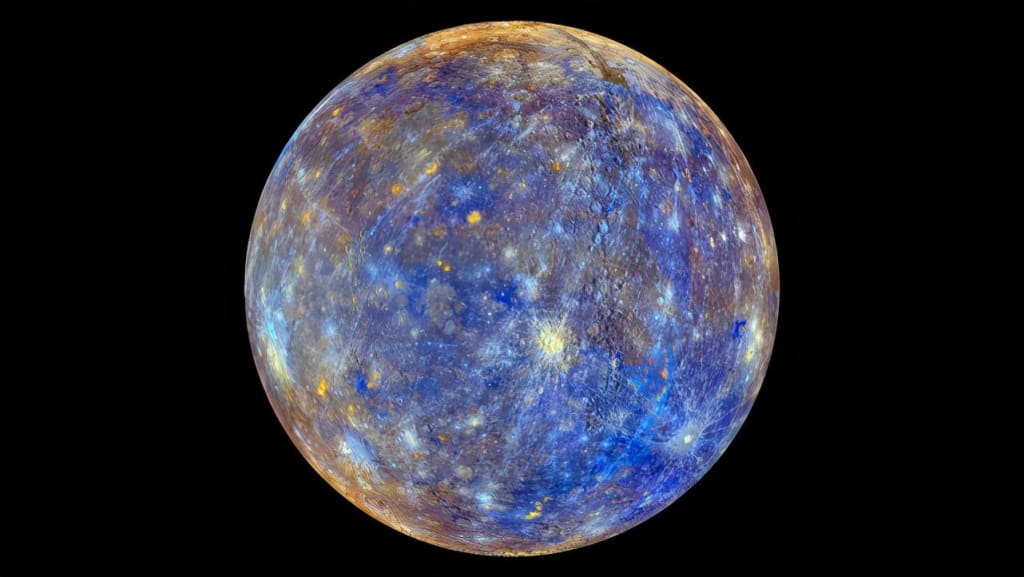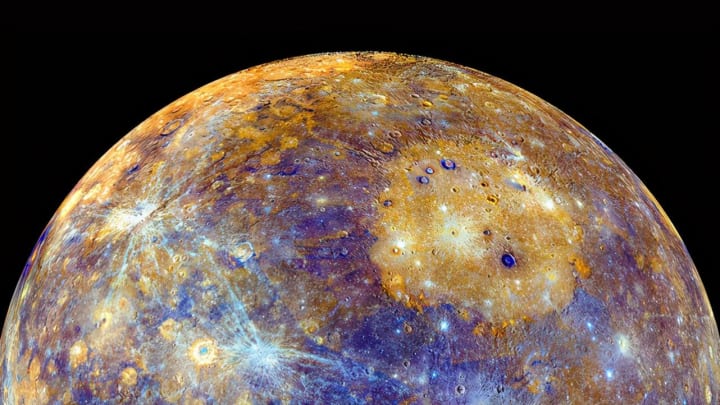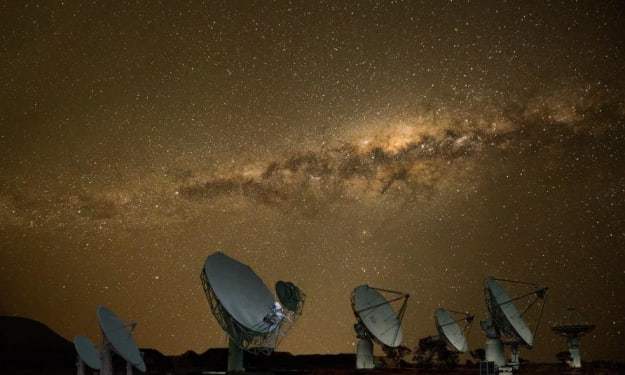How does the Earth get its water resources?
The answer may be hidden in Mercury

I don't know if you have noticed, but the Earth is a little bit wet compared to the planets. How the Earth gets all its water has been a major mystery in the formation of the solar system, and recently a team of Japanese researchers found an important clue - the answer is hidden in Mercury.
We are all familiar with the formation of the early solar system when the sun was formed around a planetary disk of stardust gas, after a certain distance from the sun, which we know as the snow line, where the solar radiation was too intense for ice and lighter elements to exist, but rocky planets could form. Beyond the snow line, which is now the asteroid belt in the solar system, ice and other light elements can be bonded together to form giant planets in the outer system. In this middle belt is no man's land, with lots of debris, ice, and junk debris.
Once the giant planets form, they rearrange themselves and, subject to gravity, they randomly eject the contents of these no-man's-land belts like water into the inner solar system. These goodies are like a waterfall on the surface of rocky planets and exist for billions of years. But a recent team of Japanese researchers looking at the crater impact record on Mercury's surface again is offering some different insights. The study shows that Mercury's crust is so rich in light elements that the number of impacts should be at least three times the amount we have observed so far. (If you're curious why we're so fascinated by Mercury, it's because Mercury is an airless, dead world, devoid of any erosion, and thus preserves the memory of bombardments billions of years ago.)

Similarly, the Earth may have had similar processes, and most of the water on the planet may have been brought in by such early "bombardments" and buried deep in the earth. Thanks to them, the Earth had plenty of water, which provided a smooth formation of the oceans.
Recently, the European Space Agency's Colombo mission, which is on its way to Mercury, will provide more answers to this mystery.
Related Knowledge
Mercury is the smallest and deepest planet in our solar system. It orbits the Sun in 87.97 Earth days. Its rotation time is the shortest of any planet in our solar system. Mercury is named after the Greek god Hermes (Ερμής), and in Latin, it is translated as "Mercury", representing the god of commerce, the messenger of the gods, and the mediator between the gods and mortals.
Mercury, like Venus, orbits the Sun in Earth's orbit as an inner planet; it is never more than 28° apparent distance from the Sun as seen from Earth. Its proximity to the Sun means that Mercury can only be observed at the western horizon after sunset (at dusk) or at the eastern horizon before sunrise (at dawn). At this time, it may look like a bright star, but observing it is more difficult than observing Venus. As Mercury moves in its inner orbit concerning the Earth, its phase range can be shown in its entirety on the telescope. Its phase range is close to the phase range term of Venus, which is a period range of roughly 116 days.
Mercury rotates in a way that is unique in the solar system. It is locked in a 3:2 spin-orbit resonance with the Sun, which means that for every two revolutions around the Sun relative to the fixed planets, it will spin around its axis exactly three times. From the Sun's perspective and in the reference system of orbital motion, the Sun only rotates once every two Mercury years. Therefore, observers can only observe Mercury once every two years.
The tilt of Mercury's axis is the shortest of all the planets in the solar system (about 1/30th of a degree). Mercury's orbital eccentricity is the largest of all known planets in the solar system. At perihelion, the distance between Mercury and the Sun is only two-thirds (or 66%) of the distance at aphelion. Mercury's surface is pockmarked like the surface of the Moon, which means that Mercury has been geologically inactive for billions of years. With little atmosphere to conserve heat, Mercury's surface temperature ranges from a low of 100 K (-173 °C; -280 °F) at night to a high of 700 K (427 °C; 800 °F) in the daytime across the equatorial regions, and consistently below 180 K (-93 °C; -136 °F) in the polar regions. -93 °C; -136 °F), its diurnal temperature difference is the largest of any planet in the solar system. The planet has no known natural moons at present.
Currently, a total of two spacecraft have visited Mercury. MESSENGER, launched in 2004, orbited Mercury more than 4,000 times in four years before running out of fuel and crashing into its surface on April 30, 2015. The Colombo spacecraft is scheduled to reach Mercury in 2025.
About the Creator
Alessandro Algardi
"She was a girl who knew how to be happy even when she was sad” and that's important you know.






Comments
There are no comments for this story
Be the first to respond and start the conversation.